Preparedness Challenge Week 21
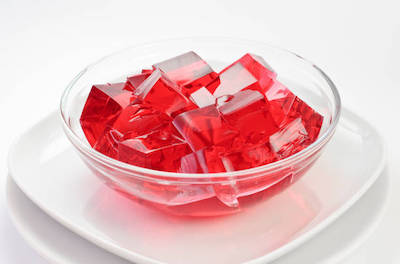
This week’s challenge is to stock up on pudding and fruit-flavored gelatin mixes as well as other dessert mixes like tapioca, custard, flan, Danish dessert, etc. Include any packaged dessert mixes that your family likes. To go along with the pudding mixes, add more dry milk to your storage.
Why Are Dessert Mixes a Good Choice for Your Food Storage?
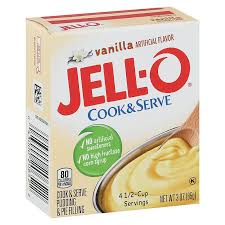
Dessert mixes might not be the most nutritious food, but they are convenient and comforting, and that goes a long way in an emergency. They add variety, and kids like them—they are familiar foods which can add some normalcy to a stressful time. You can choose instant pudding or cooked pudding, but both require milk. Of course, fruit-flavored gelatins require water and heat, and both pudding and fruit-flavored gelatins set up better if they are refrigerated.
How Many Dessert Mixes Should You Store?
The answer to how many dessert mixes should you store, like the answer to many other food storage questions, is, “It depends.”
The answer depends on how long you are anticipating that you will need to rely on your food storage. Let’s say that you want to start with enough pudding and gelatin mixes for your family for one month. Maybe that means having enough pudding for twice a week. A 3.4-ounce box of pudding makes four half-cup servings. A family of four would need two boxes of pudding per week. So, for one month, they would need eight boxes, and for three months, twenty-four boxes.
For this week, the preparedness challenge is to add eight boxes of dessert mix to your food storage.
With that in mind, and keeping it simple, the challenge this week is to add eight dessert mixes to your food storage. Of course, as always, increase or decrease this amount based on the size of your family, your preparedness timeline, and your personal preferences.
What Is the Shelf Life for Pudding and Fruit-Flavored Gelatin?
Fruit-flavored gelatin and pudding mixes are almost straight sugar along with a little gelatin or corn starch and some flavoring. These ingredients all have an indefinite shelf life if stored in a cool, dry, and dark place. These mixes will keep well past the manufacturer’s best-by-date, even up to ten years, before losing their color, flavor, and setting-up ability. For added protection, store mixes in air-tight containers.
Add More Milk to Your Food Storage
This is also a good time to add more milk to your food storage. Powdered milk has the longest shelf life and is economical. Two other options are evaporated canned milk and UHT (ultra-heat -treated pasteurization). These milks have a shorter shelf life, from six months to a year, but don’t require refrigeration. Learn more about storing milk in the Week 6 Preparedness Challenge blogpost.
BEST SOURCE FOR POWDERED MILK
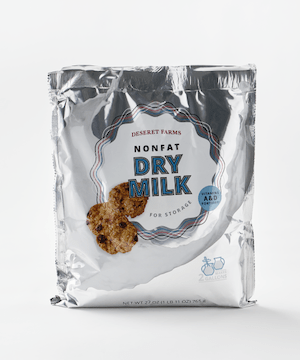
My favorite place to purchase powdered milk is from the Home Storage Centers of The Church of Jesus Christ of Latter-Day Saints. The milk is good quality, inexpensive, and comes in small packages. Two-thirds of a cup will make a quart of milk and a package is enough to make two gallons.
You can either use reconstituted powdered milk or add the powder directly to the pudding mix. For example, if the pudding directions call for two cups of milk, blend one-third cup of powdered milk into the pudding mix. Then whisk in cold water. One package of powdered milk will make enough milk for sixteen 3.4-ounce packages of pudding mix.
Ready-To-Eat Snack Cups
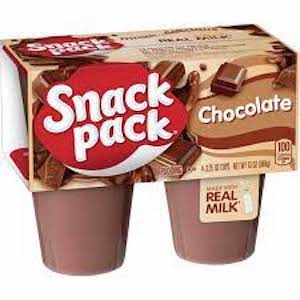
If you prefer, another option is to substitute ready-to-eat snack cups for packaged mixes. Purchase eight four-packs of your favorite snack cups. These products have a surprisingly long shelf-life of about a year. They are a good option for emergency evacuation kits but should be rotated annually. For a longer shelf life, store in a cool, dry, and dark place.
Make Your Own Pudding Mixes
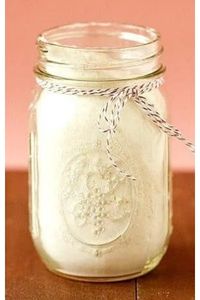
Another option is to make your own pudding mixes. Make cooked or instant mixes and choose either vanilla or chocolate flavor. Try these simple mixes and see if they work for you.
VANILLA PUDDING MIX
- 1 1/3 cup sugar
- 1/2 cup cornstarch
- 1 1/3 cup dry milk
- 1/2 teaspoon salt
- Vanilla beans or powdered vanilla
CHOCOLATE PUDDING MIX
- 1 1/2 cup sugar
- 1/2 cup cocoa powder
- 1/2 cup corn starch
- 1 1/3 cup dry milk
- 1/2 teaspoon salt
- Vanilla beans or powdered vanilla.
For each mix, whisk all dry ingredients together until well blended. Both mixes make a little over three cups of pudding mix. Store mixes in an air-tight container.
Using Pudding Mixes
To make puddings, whisk 3/4 cup dry pudding mix with 1 3/4 to 2 cups of cold water. On medium heat, whisk until mixture comes to a boil. Whisk and boil for one minute.
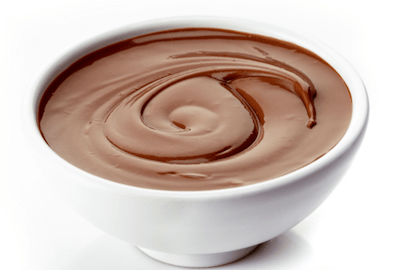
For richer pudding, add two egg yolks and two tablespoons of butter. Whisk a portion of hot pudding into egg yolks, and then stir back into remaining pudding. Remove from heat and stir in butter.
Make an Instant Pudding Mix
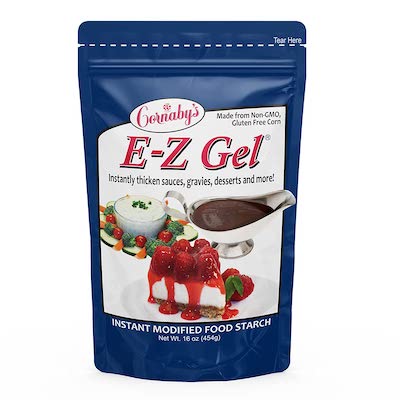
Instant pudding mix is made with instant clear gel. It comes in several brands. You can find it at some local stores, but also check online sources. Be sure it is instant.
INSTANT VANILLA PUDDING MIX
- 2 cups instant clear gel
- 2 cups granulated sugar
- 1 teaspoon vanilla powder
- 1/2 to 1 teaspoon turmeric (for color)
- Total 4 cups
INSTANT CHOCOLATE PUDDING MIX
- 2 cups granulated sugar
- 2 cups instant clear gel
- 1 1/2 cups dark Dutch processed cocoa
- 1/2 teaspoon salt
- 1 teaspoon vanilla powder
- Total 5 1/2 cups
Using Instant Pudding Mixes
Add 3/4 to 1 cup of mix—depending on how thick you want it—with 2 cups of milk. Whisk continually as the mix is dissolved in the milk and continue to mix until it starts to thicken. Refrigerate for five to ten minutes until it is completely thickened.
Recipes adapted from Noreen’s Kitchen.
Storing Gelatin
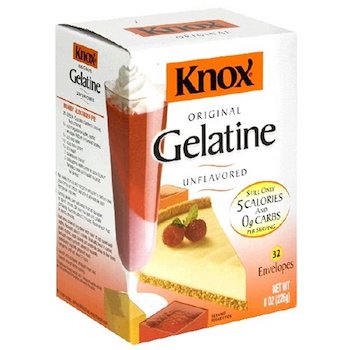
Gelatin is a basic ingredient that can be used with fruit juice, milk products, or other liquids to make a variety of desserts and aspics. It has an indefinite storage life if kept in a cool, dry, and dark place. For a longer shelf life, store it in an airtight container.
Learn More
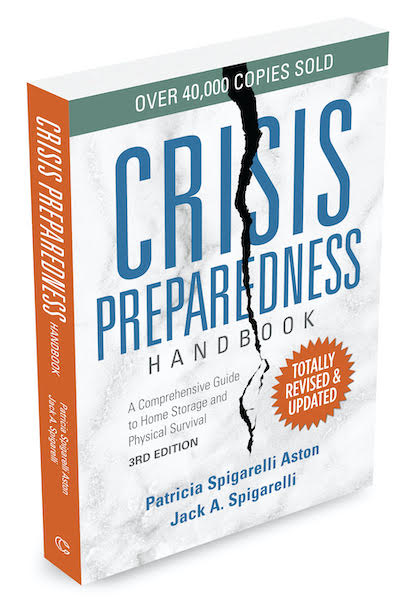
Find out more about storing foods in Crisis Preparedness Handbook, Third Edition (2020). You will find a thorough discussion of foods that are good for storage and more detailed information about storing milk. If you don’t already have a copy, you can find it here on my website CrisisPreparedness.com. Or, read it on Amazon in the Kindle version or hard copy version.


